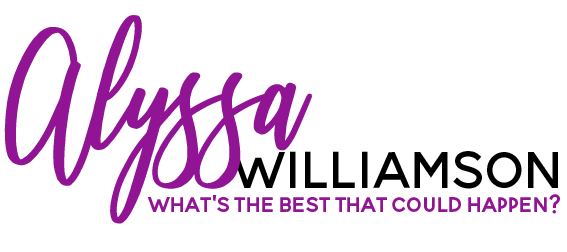Do I interact with my coach directly?
While sales and marketing are both essential for business growth and work towards a similar goal of bringing in new customers, they are very separate areas of business that can commonly be confused.
As, I prepare to hire a sales person while still running the marketing strategy of the company myself, I am now working to define the exact difference between sales and marketing.
The marketing process is broad and includes all of the following:
- Discovering what product, service or idea customers want.
- Producing a product with the appropriate features and quality.
- Pricing the product correctly.
- Promoting the product; spreading the word about why customers should buy it.
- Selling and delivering the product into the hands of the customer. Selling is just one activity of the entire marketing process.
I discussed marketing several times in my previous blog, What is Marketing? Why is it Important? Marketing and sales work together to close a sale through multiple contact points and interactions.
Marketing is the message you send to persuade your target audience that you offer the solution they need to solve their pain. It prepares your prospect for a sale, raises their awareness of your product or service and compels them to take action to connect with your company. Marketing activities supports sales efforts and include advertising, networking, branding, direct mail, online marketing and more. Marketing usually occurs before the sales process and can even continue afterwards, to encourage future sales and referrals.
Sales is the personal interaction between people in the form of cold calls, meetings, and even networking (selling at a networking event is not appreciated…). Ideally your marketing strategy is delivering a constant stream of warm leads for your sales people to follow up with. Sales is the act of persuading a customer to buy and closing the sale through these personal interactions.
Below is a guest article by Chip Doyle on the differences characterized by sales and marketing.
Sales vs. Marketing — Marketing Always Changes
Guest blog, written by Chip Doyle
[Chip is with Sandler Training and teaches people how to sell without sounding like a salesperson.]
In 2005, I wrote an article outlining the differences between marketing and selling. Many of my clients were making the mistake of doing marketing after the conversation with a prospect had started. Salespeople were missing out on valuable opportunities to sell in a consultative way and even overwhelming the prospect with irrelevant information. One of the key differentiators in that article defined marketing as one-way communication designed to foster interest in a product or service. Conversely, selling was defined as a 2-way communication designed to allow the prospect to do 70% of the talking.
Seven years of technology has changed that. Marketing is no longer a one way communication. And done properly, tech savvy marketing can even get customers and prospects to do most of the talking.
“Marketing always changes but selling stays the same.”
Selling is primarily about real time conversations between two or more people. As long as you are selling to homo-sapiens, the fundamental motivations to buy and the skills to obtain purchase commitments will remain the same. People may go about selecting a consultant, a cloud based storage system or a box of cereal in a different set of steps, but people buy emotionally and justify their decisions intellectually.
Marketing always changes. Most marketing techniques exploit human psychology but their delivery is a function of the available technology. Barnum and Bailey established trend-setting practices like sending promoters by train, in advance to future circus sites to pass out flyers, set up billboards and even foster rumors of the incredible shows that were coming to town. Radio and television dramatically influenced the delivery and content of marketing. Do you remember when fax machines were used as a means of connecting with prospects? You may receive unwanted texts on your cell phones now. Websites and social media are overtaking previously successful methods like phone books and even newspapers.
As the technology advances, we now have a unique opportunity to change the previous assumptions about marketing. Whereas 2 way communications were only possible in sales, 2 way communications are now possible in marketing.
Good salespeople speak only about 30% of the time in a sales situation. The customer speaks the remaining 70%. I’m no soothsayer, but could the future of marketing lead to communication where the customer does most of the talking? Google reviews, Yelp, YouTube and Facebook are examples of where the customer does the talking. How often do you read the reviews of a product or service before deciding to buy? Companies now actively solicit your reviews of your purchases to post with their product offerings. Advertisements are now even directed towards us based on the questions we ask (aka search history).
The web has dramatically evolved and influenced how marketing is done. Originally the internet was a repository of information and reference. 99% of internet users were readers, not contributors. (I remember explaining to new entrepreneurs that they needed to invest in a website for their company even if the return on investment was not imminently clear. 7 years later I have to convince young entrepreneurs that they shouldn’t do ALL of their marketing and sales solely through the web.) But 2 way communications changed rapidly on the web. Small businesses and even individuals started to create their own web pages. Portal and social sites were created to elicit feedback and content from people that didn’t even have websites. (I know this sounds boring but it was considered a breakthrough at the time.) Wikipedia built an entire site based on contributions from readers/users. Instant messaging alerted others of “my status” and soon social media websites like Facebook became popular because even grandmothers want to see their grand-daughter’s status. And now we base our buying decisions on reviews posted on Yelp or Amazon as the division between “readers” and “contributors” quickly blurs. Readers are now the contributors and the 2 way communication is at an all-time high when it comes to marketing products or services.
Prospects don’t believe salespeople or marketing people.
Any sales expert will tell you that prospects must talk themselves into the purchase. All the salesperson can do is direct the conversation with questions that cause the prospect to recognize their own need and the urgency to address it. None of us trust salespeople and the more they tell us what to do, the greater our resolve to do the opposite. OK, maybe you trust a couple of salespeople but they’ve done something to earn that trust and odds are they are not the pushy type that spend lots of time presenting slide decks or telling you the price goes up on Friday. People don’t trust marketing messages either. Marketing execs can say it runs faster or protects more but when Josephine Public says she tried both systems but XYZ does indeed run faster and the competitor’s system didn’t protect her system, that is marketing gold. And technology now provides the opportunity for companies to capture marketing gold automatically.
I’m old enough to remember the essay contests that breakfast cereal companies would run. They would award a free trip to Hawaii for the whole family to the person who wrote the best description of why they love their cereal. Marketing execs knew it would motivate thousands of people to spend hours writing intimate details about why they loved their cereal. Those marketing execs also knew that each person that devoted hours to this task, reiterating to themselves that XYZ cereal was the most wholesome breakfast was highly unlikely to go to the grocery store and suddenly try the competitive brand. Psychologists call it Congruent Behavior. But you don’t need a PhD to understand that anyone who writes passionately about their purchasing behavior is more likely to follow through in a similar fashion later. And now marketers have the opportunity to exploit Congruent Behavior in an automated 24/7 fashion.
Marketing will continue to evolve and change as technology enables new strategies and capabilities. I expect to see an enormous transformation of marketing over the next 7 years away from company messaging and one-way communication to interactive media and a “conversations” between customers and prospective buyers. Salespeople will always be necessary with complex, expensive purchases, anything requiring customization, special services or “high impact” purchases. (Do you remember when you bought a cell phone in 1989? That was an expensive sale that required consultative salespeople…) But as always, superior marketing will greatly assist the sales efforts of every company’s sales efforts no matter what they sell. What do you think? Questions to ponder and comment:
What is the next trend in 2 way interactive marketing?How will 2 way interactive marketing affect salespeople?Will marketing ever completely eliminate the salesperson?What are the new social media trends and who are the companies best exploiting those trends?

